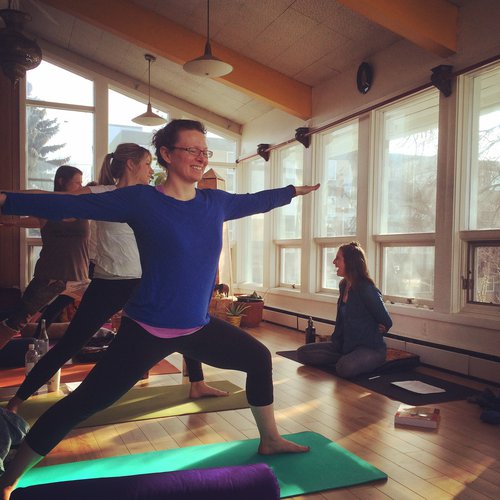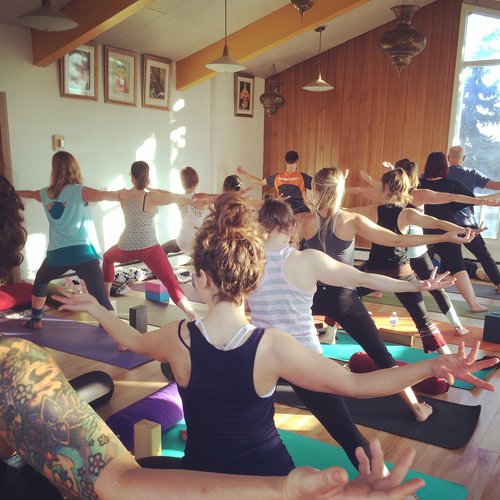Aug. 16, 2022
Yoga Teacher Tips: Simplified Sequencing
Add this one simple cue!
Watch the video and read the article below
Make Your Sequencing Simple
How often do you find yourself overthinking, overplanning, doubting or worrying about your sequences in your classes?
Here's a really helpful tip when it comes to simplifying your sequences. And the best part is that you don't have to drastically change how you teach and this tip can be applied to any style of yoga.
It's all about Action Cues.
What are Action Cues?
Action cues help to make your sequences more simple and effective.
The way we typically cue yoga poses are aesthetic cues. This means that our instructions are focused on creating specific shapes with the body. For example, cues for Warrior Two might be along the line of "Step your right foot forward, bend your knee into a ninety-degree angle. Reach your arms out to your side at shoulder height."

There's nothing wrong with aesthetic cues as they're helpful for setting up poses. But if you've been teaching for any amount of time, you might be getting bored of saying the same thing for each pose.
Action cues help to uplevel your teaching, keep your sequences fresh, and support the health of the joints through functional strength and mobility while improving focus for the brain and nervous system.
Action Cues + Simplified Sequencing
Action cues are an action you can teach and apply to almost any pose. You don't have to bore your students with long complicated anatomical explanations because action cues are simple actions, usually from a joint-based action that direct the muscles and joints to work as they need to without a ton of extra cueing.
- Aesthetic cues set up the shape, and action cues are where the real benefits of the pose happen.
- When you invite action cues into your teaching, you create opportunities for building more strength, stability and mobility in the places where people need them the most.
A good teacher creates sequences that help to undo chronic postural habits in their students. So while much of our classical approaches to yoga asana can help, action cues allow us to enhance what we're teaching while also keeping things simple.
It's actually quite magical to see it in action (lol, pun not intended!)

Action Cues in Action
For the example used in the video lesson, we use external rotation as the action cue. It's one simple movement, inviting external rotation of the shoulder joint. Or more specifically (if you want to get even nerdier) external rotation of the humerus, the upper arm bone, to undo chronic internal rotation and forward head posture.
We then take that action cue and easily apply it to many poses. So you can take your tried and true sequences and simply add in external rotation at the shoulder joint into applicable poses. So simple, incredibly helpful and keeps your teaching fresh and relevant!
Next Steps
The external rotation of the arm is just one example of an action cue. Other action cues can be:
- Aligning the ribs over the pelvis for better core stability and strength.
- Kicking on the glutes in lunges and backbends for more posterior chain strength.
- Internal and external rotation of the femur bone for improved hip joint health and mobility.
When you have a strong base of knowledge of functional movement and applied anatomy it naturally informs your teaching and gives you more tools as a teacher. I hope you keep learning about our incredible human body and may it inspire your teaching and help you to help more people move with love in your classes!
Yoga at Home: Building a Routine to Make It Easier to Get on Your Mat
Creating a consistent yoga practice at home can feel challenging, but with a few small rituals, it can become something to look forward to.
How to DIY Your Own At-Home Yoga Sanctuary
Learn how to create a personalized, peaceful at-home yoga sanctuary with simple, budget-friendly ideas.
5 Easy Ways to Start Your At-Home Yoga Practice Today
Discover five practical and easy ways to start an at-home yoga practice that fits seamlessly into your daily routine.



